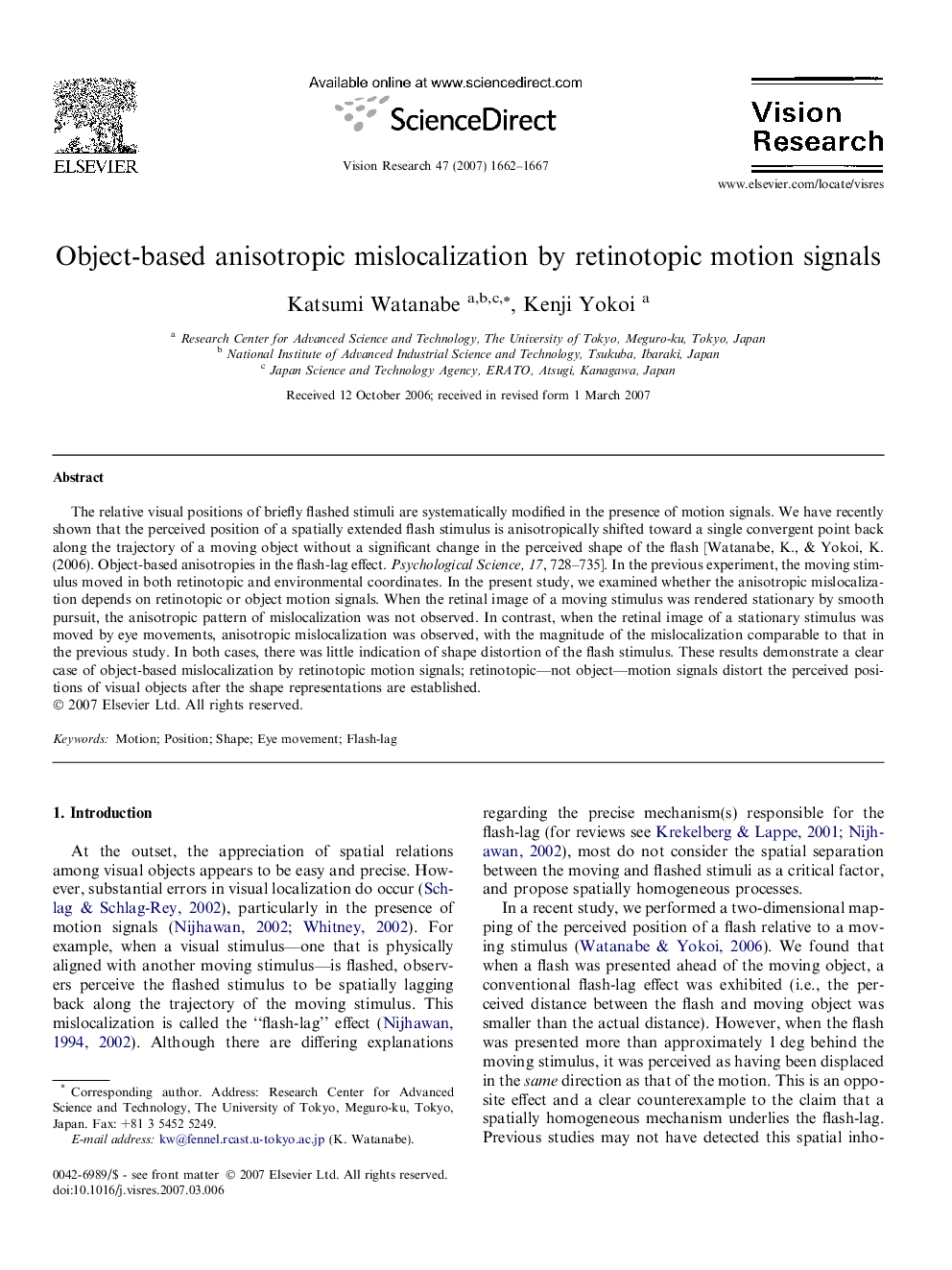| Article ID | Journal | Published Year | Pages | File Type |
|---|---|---|---|---|
| 4035697 | Vision Research | 2007 | 6 Pages |
The relative visual positions of briefly flashed stimuli are systematically modified in the presence of motion signals. We have recently shown that the perceived position of a spatially extended flash stimulus is anisotropically shifted toward a single convergent point back along the trajectory of a moving object without a significant change in the perceived shape of the flash [Watanabe, K., & Yokoi, K. (2006). Object-based anisotropies in the flash-lag effect. Psychological Science, 17, 728–735]. In the previous experiment, the moving stimulus moved in both retinotopic and environmental coordinates. In the present study, we examined whether the anisotropic mislocalization depends on retinotopic or object motion signals. When the retinal image of a moving stimulus was rendered stationary by smooth pursuit, the anisotropic pattern of mislocalization was not observed. In contrast, when the retinal image of a stationary stimulus was moved by eye movements, anisotropic mislocalization was observed, with the magnitude of the mislocalization comparable to that in the previous study. In both cases, there was little indication of shape distortion of the flash stimulus. These results demonstrate a clear case of object-based mislocalization by retinotopic motion signals; retinotopic—not object—motion signals distort the perceived positions of visual objects after the shape representations are established.
